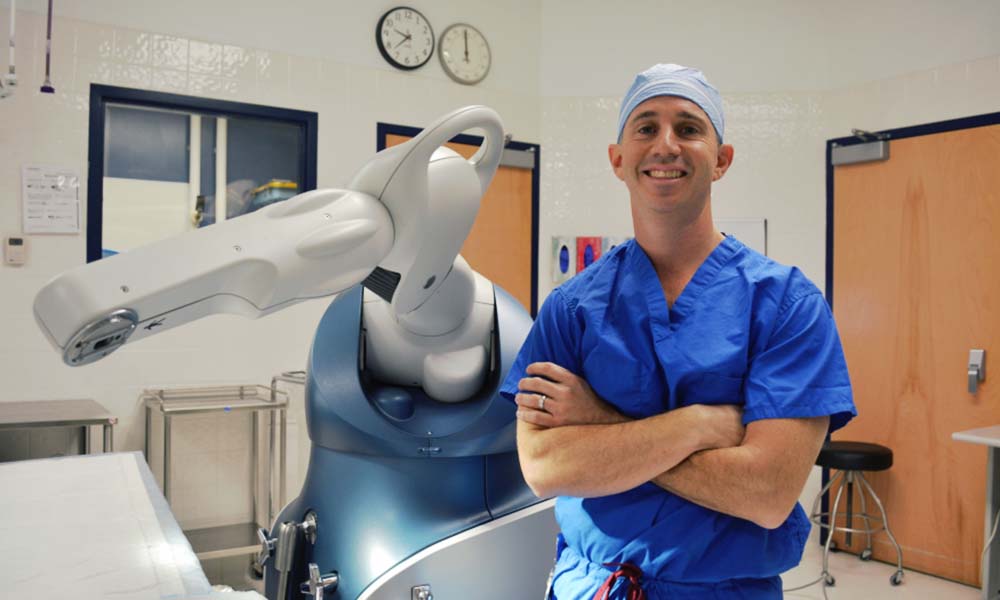
In the realm of orthopedic surgery, robotic-assisted techniques have revolutionized the landscape of knee replacements, offering new possibilities even in the most complex cases. From severe deformities to ligamentous instability, robotic knee replacement surgery provides surgeons with advanced tools to address challenges with precision and efficacy.
In this article, we delve into the intricacies of robotic knee replacement in complex cases, exploring how this innovative approach is transforming patient outcomes and quality of life.
Robotic Knee Replacement in Complex Cases
1. Addressing Severe Deformities
Robotic knee replacement surgery is particularly valuable in addressing severe deformities of the knee joint. Whether due to congenital abnormalities, previous surgeries, or advanced osteoarthritis, these deformities can present significant challenges for traditional surgical techniques. Robotic systems enable surgeons to meticulously plan the procedure and execute precise cuts and adjustments, allowing for optimal alignment and stability even in the presence of complex deformities.
2. Managing Ligamentous Instability
Ligamentous instability, deficiency, or chronic ligamentous laxity can complicate knee replacement surgery and compromise joint function. Robotic-assisted techniques offer enhanced stability and balance by accurately positioning implants and restoring natural knee kinematics. Through real-time feedback and intraoperative adjustments, surgeons can tailor the procedure to address ligamentous instability, improving joint stability and reducing the risk of postoperative complications.
3. Navigating Previous Surgeries
Patients who have undergone previous knee surgeries, such as arthroscopy or ligament reconstruction, may present unique challenges for knee replacement surgery. Scar tissue, altered anatomy, and compromised soft tissues can complicate implant placement and joint alignment. Robotic assistance allows surgeons to navigate these complexities with precision, minimizing trauma to surrounding structures and optimizing patient outcomes.
4. Customized Solutions for Individual Patients
Every patient is unique, and robotic knee replacement surgery enables a personalized approach to address the specific needs of each individual. Through advanced preoperative planning and intraoperative guidance, surgeons can tailor the procedure to match the patient’s anatomy, biomechanics, and functional goals. Customized implant sizing, alignment, and soft tissue balancing contribute to improved joint function and long-term outcomes, particularly in complex cases where standard approaches may fall short.
5. Enhancing Patient Outcomes
The benefits of robotic knee replacement in complex cases extend beyond the operating room, impacting patient outcomes and quality of life. By optimizing joint alignment, stability, and function, robotic-assisted techniques can reduce postoperative pain, enhance mobility, and improve overall satisfaction. Patients with complex knee conditions who may have previously been considered poor candidates for traditional surgery can now experience meaningful improvements in function and quality of life thanks to robotic technology.
6. Advancing the Field of Orthopaedics:
Robotic knee replacement surgery in complex cases represents a significant advancement in the field of orthopedics, pushing the boundaries of what’s possible and expanding treatment options for patients with challenging conditions. As technology continues to evolve, robotic systems will likely play an increasingly integral role in addressing complex orthopedic challenges, offering new hope and possibilities for patients facing difficult knee conditions.
In conclusion, robotic knee replacement surgery has emerged as a transformative approach for addressing complex cases of knee osteoarthritis and other challenging conditions. By combining precision, customization, and advanced technology, robotic-assisted techniques offer new possibilities for patients who may have previously faced limited treatment options. As the field continues to evolve, robotic knee replacement surgery will undoubtedly continue to push the boundaries of orthopedic care, providing new hope and improved outcomes for patients with even the most complex knee conditions.




